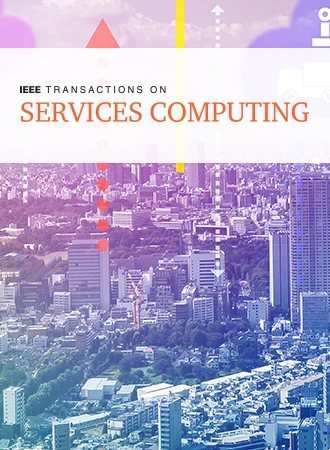Intelligent Transaction Generation Control for Permissioned Blockchain-Based Services
IF 5.8
2区 计算机科学
Q1 COMPUTER SCIENCE, INFORMATION SYSTEMS
引用次数: 0
Abstract
Since the permissioned blockchain technology has been proposed to ensure data integrity in distributed systems, the low throughput and high latency have been recognized as major issues. In some applications, the data, available later than allowed time, can be useless, so the effective throughput is newly considered, defined as the average number of transactions per second, committed within the required latencies. For maximizing the effective throughput, we propose a novel intelligent transaction generation control (i-TGC) method to determine the transaction generation for each client. To improve performance in the dynamic environment of blockchain services based on real-time information, we employ the reinforcement learning (RL) for the i-TGC algorithm. Our experiment results show the i-TGC outperforms the probabilistic transaction generation control (p-TGC), which generates transactions randomly with the optimal probability that maximizes the effective throughput. We also verify the performance of the i-TGC for various environments with different block sizes, block generation timeout, traffic patterns, and the number of clients. The i-TGC can be a way to accelerate the usage of the permissioned blockchain for latency-sensitive services.基于许可区块链服务的智能交易生成控制
由于提出了允许区块链技术来保证分布式系统中的数据完整性,低吞吐量和高延迟已被认为是主要问题。在某些应用程序中,在允许的时间之后可用的数据可能是无用的,因此需要重新考虑有效吞吐量,将其定义为在所需延迟内提交的每秒平均事务数。为了最大限度地提高有效吞吐量,我们提出了一种新的智能事务生成控制(i-TGC)方法来确定每个客户端的事务生成。为了提高基于实时信息的区块链服务在动态环境中的性能,我们对i-TGC算法采用了强化学习(RL)。我们的实验结果表明,i-TGC优于概率事务生成控制(p-TGC),后者以最大有效吞吐量的最优概率随机生成事务。我们还验证了i-TGC在具有不同块大小、块生成超时、流量模式和客户端数量的各种环境中的性能。i-TGC可以加速对延迟敏感的服务使用许可的区块链。
本文章由计算机程序翻译,如有差异,请以英文原文为准。
求助全文
约1分钟内获得全文
求助全文
来源期刊

IEEE Transactions on Services Computing
COMPUTER SCIENCE, INFORMATION SYSTEMS-COMPUTER SCIENCE, SOFTWARE ENGINEERING
CiteScore
11.50
自引率
6.20%
发文量
278
审稿时长
>12 weeks
期刊介绍:
IEEE Transactions on Services Computing encompasses the computing and software aspects of the science and technology of services innovation research and development. It places emphasis on algorithmic, mathematical, statistical, and computational methods central to services computing. Topics covered include Service Oriented Architecture, Web Services, Business Process Integration, Solution Performance Management, and Services Operations and Management. The transactions address mathematical foundations, security, privacy, agreement, contract, discovery, negotiation, collaboration, and quality of service for web services. It also covers areas like composite web service creation, business and scientific applications, standards, utility models, business process modeling, integration, collaboration, and more in the realm of Services Computing.
 求助内容:
求助内容: 应助结果提醒方式:
应助结果提醒方式:


